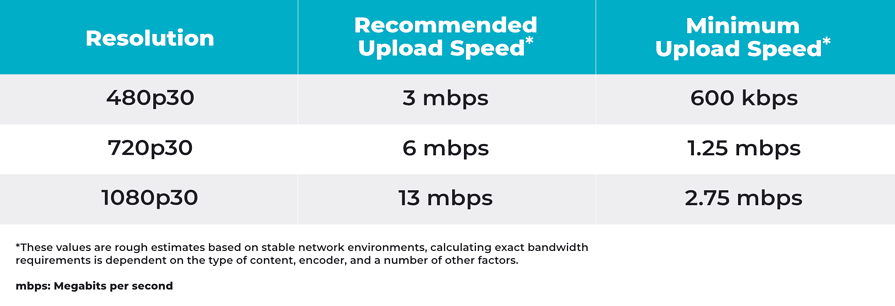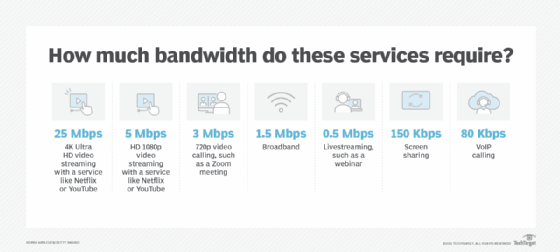Exactly How Megabits Per Second Effect Your Online Activities
The concept of megabits per second (Mbps) plays a critical duty in shaping our on the internet experiences. Higher Mbps can boost performance and minimize interruptions, while poor speeds may cultivate stress and ineffectiveness.
Understanding Megabits Per Second
When taking into consideration web rate, it's necessary to understand the principle of megabits per second (Mbps), which acts as a common measurement for information transfer prices. This metric evaluates how much information can be transmitted over a net connection in one second, providing a clear understanding of performance capacities - Megabits Per Second. For context, one megabit amounts to one million bits, and Mbps is generally used to reveal bandwidth for various on the internet tasks
A higher Mbps shows a quicker internet link, enabling users to do jobs such as downloading and install files, surfing websites, and participating in online video gaming a lot more successfully. For example, regular browsing needs around 1-5 Mbps, while streaming high-def video clip might require 5-25 Mbps. Understanding these requirements is vital for figuring out the appropriate internet speed needed for specific activities.
Additionally, the number of tools attached to a network can influence total efficiency. Numerous customers streaming, pc gaming, or downloading concurrently can stress available bandwidth, resulting in slower rates - Megabits Per Second. Reviewing personal online routines and demands is important in choosing an internet strategy that straightens with one's requirements, making sure a seamless digital experience
Streaming and Buffering Issues
Streaming high-definition web content has actually ended up being a staple of contemporary on-line amusement, yet it is usually come with by irritating buffering problems. These interruptions can significantly interfere with the viewing experience, leading to frustration and prospective loss of audience involvement. Buffering happens when the data transmitted from the streaming service is not obtained swiftly enough to keep a smooth playback, typically due to not enough internet rate determined in megabits per second (Mbps)

Moreover, real-time streaming can be influenced by network blockage, which happens when multiple devices share the exact same data transfer. Enhancing connection rate and making sure sufficient Mbps is essential for a smooth streaming experience. As streaming services proceed to progress, understanding the influence of Mbps on buffering problems remains essential for customers seeking continuous home entertainment.
Online Gaming Efficiency
The impact of net rate on online tasks extends past streaming, considerably affecting online pc gaming performance. In competitive video gaming, low latency and high data transfer are essential for a smooth experience. A fast connection decreases lag, enabling gamers to respond swiftly to in-game occasions, which can be the distinction between triumph and defeat.
Data Find Out More transfer, gauged in megabits per second (Mbps), plays a crucial role in supporting numerous devices and video gaming systems simultaneously. Inadequate transmission capacity can lead to dropped links or reduced game top quality, adversely affecting gameplay. For example, on-line multiplayer games require considerable information transfer, specifically throughout peak pc gaming hours when various players are online.
Moreover, the kind of game can likewise dictate the required web speed. Busy first-person shooters require higher speeds to preserve responsiveness, while turn-based approach video games might function reasonably well on lower speeds. As on-line gaming continues to develop, with enhancing graphical fidelity and more complex multiplayer atmospheres, the need for greater Mbps will just escalate. Players should guarantee they have ample web speed to enhance their gaming performance and total experience. Spending in a durable net link is necessary for players wanting to optimize their efficiency and satisfaction.
Video Clip Conferencing Quality
In today's digital landscape, video conferencing her explanation top quality is heavily affected by web speed, specifically in terms of data transfer and latency. High-grade video calls need enough data transfer to transmit sound and video information seamlessly. Commonly, a minimum of 1.5 Mbps upload and download speeds is recommended for common definition video clip, while high-definition video conferencing usually demands at the very least 3 Mbps.
Latency, or the hold-up between sending out and receiving data, likewise plays a critical function in the individual experience. Greater latency can lead to resemble, lag, and disjointed communications, which can impede partnership and involvement throughout meetings.
Furthermore, several individuals in a video clip seminar can stress readily available data transfer, demanding even greater rates. Network congestion, typically brought on by synchronised tasks like streaming or downloading, can further deteriorate video quality. Therefore, for companies depending on video clip conferencing for remote cooperation, recognizing the partnership in between megabits per general and second communication quality is vital for preserving efficiency and enhancing virtual interactions.
Picking the Right Net Plan
Picking an ideal net strategy is crucial for ensuring ideal performance in different online activities, especially in setups that view it require high transmission capacity, such as video clip conferencing and online video gaming. Megabits Per Second. When thinking about an internet strategy, it is vital to review both the rate and information allocation to match your particular usage demands
For families with several users taking part in synchronised tasks, a plan offering higher megabits per second (Mbps) is advised. Usually, a minimum of 25 Mbps is appropriate for standard streaming and browsing, while strategies surpassing 100 Mbps are more suitable for more extensive tasks. Additionally, take into consideration the nature of your online activities; video clip conferencing needs at least 1.5 Mbps post speed, while online video gaming may require a lower latency yet constant link.
It is likewise crucial to assess your information cap. Unrestricted data strategies can prevent strangling and interruptions, specifically if heavy use is expected. Research service carriers in your area, as schedule and pricing can vary. By attentively selecting a web strategy tailored to your demands, you can boost your online experience, making sure smooth, nonstop access to your recommended activities.
Verdict
Finally, the importance of megabits per second (Mbps) fit online tasks can not be overstated. Higher Mbps assists in seamless streaming, minimizes buffering, improves video gaming experiences, and makes sure top notch video clip conferencing. On the other hand, insufficient data transfer can cause discouraging disruptions and decreased performance across numerous tasks. As a result, a complete understanding of private or home Mbps requirements is essential for picking an ideal web strategy that sufficiently sustains diverse online activities and customer demands.

Usually, a minimum of 25 Mbps is appropriate for basic streaming and browsing, while strategies going beyond 100 Mbps are more effective for more intensive tasks. In addition, take into consideration the nature of your online tasks; video conferencing calls for at least 1.5 Mbps publish speed, while online pc gaming may need a reduced latency however consistent link.
Comments on “The Duty of Megabits Per Second in Online Video Gaming Performance”